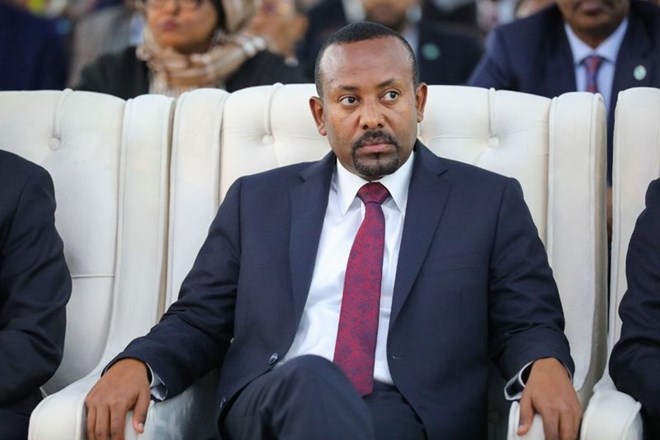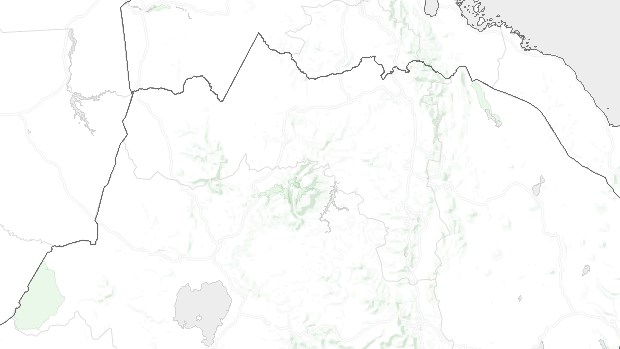
BySamuel Gebre and Fasika Tadesse
Monday August 8, 2022
From BloombergQuickTake

Abiy Ahmed Photographer: Mohammed Dhaysane/Anadolu Agency/Getty Images
Ethiopian Prime Minister Abiy Ahmed battled rebels for more than 16 months before declaring a truce in March 2022, staving off a challenge to his authority. But the conflict has pushed millions of people into hunger in the northern Tigray region and soured his once-illustrious reputation. The nation’s misery has been compounded by the worst drought in four decades and soaring prices of grain and fuel. Abiy is also having to contend with fresh political violence in the center of the country, a territorial dispute with Sudan and attacks by al-Qaeda-linked militants.
1. How did Abiy’s fortunes change?
Abiy started with a bang when he became Ethiopia’s prime minister in 2018. He scrapped bans on opposition and rebel groups, purged allegedly corrupt officials and ended two decades of acrimony with neighboring Eritrea, an initiative that won him the 2019 Nobel Peace Prize. He also put out the welcome mat for foreign capital to maintain momentum in one of the world’s fastest-expanding economies, and vowed to quell civil unrest. But he struggled to contain ethnic tensions and his attempts to sideline the Tigray People’s Liberation Front, the nation’s pre-eminent power broker for decades, led to civil war. The conflict stalled the planned privatization of key telecommunications assets and other economic reforms, and prompted the US government to impose sanctions on Ethiopia and withdraw its duty-free market access.
Abiy set about consolidating power under his newly formed Prosperity Party after taking office. The TPLF, which had dominated the country’s ruling coalition since a Marxist regime was overthrown in 1991 and continued to govern Tigray, refused to be amalgamated. Its leaders ignored a government directive to postpone elections in Tigray because of the pandemic, and the federal parliament retaliated by halting direct budget support to the region. Abiy ordered a military incursion into Tigray in November 2020 after accusing forces loyal to the TPLF of attacking a military base to steal weapons. The TPLF said its raid was a preemptive strike because federal troops were preparing to attack its territory. After several setbacks, the government eventually gained the upper hand in the war and the rebels withdrew to within Tigray’s borders in December 2021. The government continued to stage air strikes on Tigray and fighting continued in the neighboring Amhara and Afar regions before the truce was declared. Tensions between the two sides remain elevated and, while they publicly agreed to talks, it’s unclear whether there will be lasting peace.
Ethiopia's Tigray Region

3. What’s been the fallout of the war?
The government hasn’t disclosed casualties and access to the conflict zones was restricted, but there are fears that tens of thousands of people have died due to fighting, hunger and a lack of medical care. In June, the United Nations estimated that the war, and a drought in eastern Ethiopia, had left more than 29 million people in need of aid. The situation was particularly dire in Tigray and the neighboring Afar region, where malnutrition and food insecurity were rife. The government has rejected allegations from civil rights groups that it obstructed efforts to dispense aid or that its forces were party to widespread human rights violations. The UN Human Rights Council has begun collecting evidence about alleged crimes committed during the conflict.
4. What are the latest tensions about?
The government has accused members of the Oromo Liberation Army, which has aligned itself to the TPLF and has been campaigning for greater regional autonomy, of killing hundreds of civilians and deployed the army to avert further violence. The group, which controls a number of towns and villages in the central Oromia region, in turn alleges that the federal police have been targeting and killing ethnic Oromos and Nuers. Abiy has also fallen out with Fano, an ethnic Amhara group that fought alongside federal forces against the Tigrayans and opposed the truce because it wanted an outright victory and uncontested rights to disputed territory. Ethiopia and Sudan are meanwhile at loggerheads over the rights to a swathe of fertile land along their common border, and there have been a series of clashes between their troops. Al-Shabaab, a Somalia-based Islamist group that’s linked to al-Qaeda and is seeking to expand its influence in the Horn of Africa, staged an attack in Ethiopian territory in July 2022.
5. Why all the instability?
Africa’s oldest nation state, Ethiopia has long been plagued by discord among its more than 80 ethnic groups. The country was an absolute monarchy until the 1974 socialist revolution that deposed Emperor Haile Selassie. It became a multi-ethnic federation in 1991, when a TPLF-led alliance of rebels overthrew the Marxist military regime that followed Selassie. The Tigrayans, though comprising just 6% of the population, came to dominate national politics. After failing to quell three years of violent protests over the marginalization of other bigger communities, including the Oromo and Amhara, Hailemariam Desalegn quit as prime minister in 2018. The then-ruling Ethiopian People’s Revolutionary Democratic Front named Abiy, an Oromo, as his successor. Abiy’s party won a decisive majority in mid-2021 elections.
6. What’s been the impact on the economy?
Ethiopia’s $105 billion economy expanded by an average of more than 7% annually between 2018 -- the year Abiy took power -- and 2021, but the International Monetary Fund sees the growth rate slowing to less than 4% in 2022. With its finances under strain, the government announced in 2021 that it wants to restructure its $28.4 billion of external debt. But the US has urged multilateral lenders to halt their engagement with Abiy’s administration, and a block on their funding could derail the debt overhaul. The IMF is also yet to initiate a new program for Ethiopia -- a key requirement for debt restructuring -- after the previous one lapsed without any money being disbursed.
The Reference Shelf
- A QuickTake on why Abiy won international acclaim and another on why Ethiopia’s filling of a giant dam stoked tensions.
- A Bloomberg News story on the border conflict with Sudan and another on the drought in the Horn of Africa.
- The International Monetary Fund’s home page on Ethiopia.